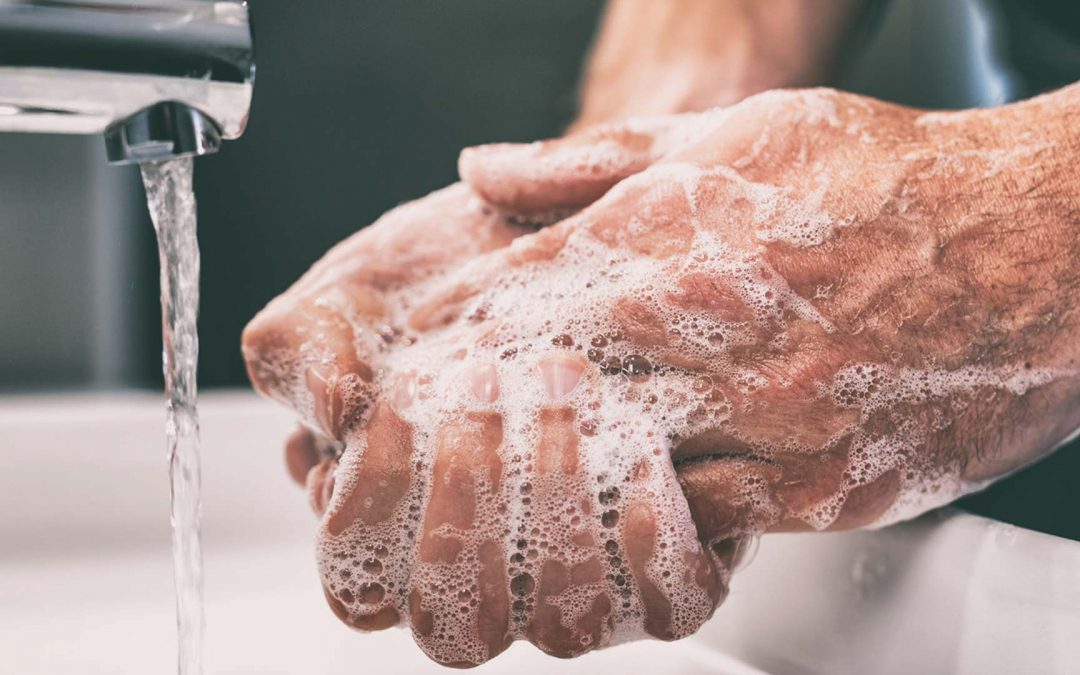Richard Newton, principal of independent care home consultancy Opeque, reflects on recent government guidance on infection prevention and control
The new government guidance for care homes published in April 20221 is really no different in principle to the 2013 Department of Health document, but the content is re-packaged and provides far greater emphasis and instruction on the need to control and reduce the risks posed by infections as well as giving guidance on how to achieve compliance.
This guidance, which sets out general infection prevention and control (IPC) principles to be used in combination with advice and guidance on managing specific infections, is for those responsible for setting and maintaining standards of IPC within adult social care in England. ‘Adult social care’ is a broad term covering a wide range of activities which help people who are older, living with disability or physical or mental illness, or people with a learning disability, to live independently and stay well and safe.
Preventing and reducing the transmission of infectious diseases is essential to ensuring people stay healthy. People who have contact with social care should have confidence in the cleanliness and hygiene of services and services provided. Not all the contents of this guidance will be applicable to every situation or type of care and support.
The term ‘pathogen’ is used throughout the guidance document to describe micro-organisms or germs which can infect people and cause disease.
IPC practices should be based on person-centred care and the best available evidence and guidance. This document does not replace any clinical or public health advice. The information within it draws upon several sources including the National Institute of Health and Care Excellence (NICE), NHS, government departments, and professional regulators.
Providers registered with the Care Quality Commission (CQC) must comply with the regulations and consider the Code of Practice for the prevention and control of infections in the delivery of their services.
A risk-based approach
The guidance follows a risk-based approach, whereby the physical elements of the workings of a care home are assessed for their potential to generate, harbour, or transmit infections. The key elements are:
- Hand hygiene.
- Respiratory and cough hygiene.
- PPE.
- Safe management of care equipment.
- Safe management of the environment.
Preventing and reducing the transmission of infectious diseases is essential to ensuring people stay healthy
- Management of laundry.
- Management of blood and body fluid spills.
- Waste management.
- Management of exposure.
For each of these elements, there are clear definitions and advice given to enable the correct controls to be implemented; however, the need for external support and training in these measures is crucial to passing the CQC audit.
The CQC have responded accordingly and have recently launched their eight-point ‘information gathering tool’2 to identify the key areas that they will address to measure performance. There are, however, significant gaps in both the government guidance and the CQC tool.
Therefore, specific guidance is essential. It is common for companies who are bound by regulation and legislation to seek professional external assistance. The motto for consulting and service industries is: We allow you to undertake your core business whilst we look after your chore business.
Demonstrating compliance
The CQC eight-point audit scheme:
- Visitor controls: communication, professional or family, guidance, procedures, etc.
- Residents’ awareness: minimise proximity, basic hygiene measures, external visits, the need for isolation, etc.
- Safe admission of residents: assessment, awareness, controls, isolation, etc.
- PPE awareness and use: communication, special needs, procedures, stock management.
- Positive test procedures: residents, staff, isolation, administering medication.
- Operating the premises hygienically: layout, cleaning, walkways/routes, fire safety, etc.
- IPC staff training: permanent and agency, previous outbreaks, wellbeing, staff support.
- IPC practices: awareness, audit, non-conformances, and corrections.
The root causes of infection are manifold and, while clinical in essence, the vectors for their transmission are physical and all procedures where cross-contamination may occur must be risk-assessed and correctly managed.
Best practices have, of course, been implicit for years, and whenever an influenza, norovirus, or other such outbreak has occurred, the necessary containment procedures have been practised. None so critically and severely, however, as when the COVID 19 pandemic kicked in, albeit with much confusion, crossed wires, and the potential for blame. Much has been learnt over the last few years but are we really prepared and ready to implement the required procedures the next time it happens?
The pandemic and beyond
Antimicrobial resistance is a global problem that makes infections harder to treat with existing medicines. High standards of IPC reduce the opportunities for infections to spread and for resistance to develop, so that is why this new guidance has been developed.
Day-in, day-out, responsibility for the health and wellbeing of many of the most vulnerable elderly members of society is entrusted to 5,500 different provider-organisations across the UK’s £16bn care home sector, operating 11,000-plus care homes, with more than 400,000 residents. Historically, residential care settings have always presented significant challenges to those in charge of establishing and implementing appropriate protocols and good-practice in on-site risk-management, safety culture, cleanliness, hygiene-management, and IPC.
And then came COVID!
By autumn 2020, Public Health England (now the UK Health Security Agency) reported that more than 43,000 care home residents had tested positive for COVID. Throughout 2021 and moving into 2022, care homes faced an unprecedented set of logistical, legal, workforce, and operational challenges to the safe and successful management of their businesses.
Now, as we move into the so-called ‘post-pandemic’ age, we cannot be complacent; the care home sector must reflect on the experience and refocus, implementing those new and urgent measures as standard procedures. The whole culture is ripe and ready for change.
The impact of COVID on the care home sector was widely published, albeit sometimes inaccurately, and there is no doubting the massive and tragic loss of life, but to some degree it happened everywhere else, too. We must all learn from the experience, and what better incentive than loss of life and the crumbling economy to focus attention?
Time for a major upgrade
The IPC guidance should not just be for care homes.
All aspects of IPC – physical, clinical and behavioural – both in design and practice, should be up there with all the other current headliners such as energy efficiency, net zero strategy, fire safety, air and noise pollution, and so on, to realise safe, healthy, and sustainable buildings – not just for the ‘new build’ regulations, but as a requirement for all existing premises and work environments.
Industry, transport, hospitality, and leisure must all embrace the culture of IPC and impose the relevant measures as a norm.
In June, the National Engineering Policy Centre (NEPC) published its report Infection resilient environments: time for a major upgrade.3 The report made recommendations for improving the health of indoor environments, including:
- The development of a clear baseline of what best practice in infection resilience looks like.
- The establishment by local authorities of in-use regulations to maintain standards of safe and healthy building performance over a building’s lifetime.
- That the Department for business, energy and industrial strategy, the Department for transport, and the Department for levelling up, housing and communities ensure major retrofit programmes address infection resilience in order to seize the opportunity created by the net zero strategy to make UK infrastructure safe, healthy, and sustainable.
- The creation of joined-up policy-making that will align infection resilient environments with net zero, safety, equality, and accessibility goals – key to which is the government identifying a lead department.
In addition to these, regular cleaning plays an essential role – for the building infrastructure (where ventilation is so important), washrooms, office and work equipment, floors, and, of course, our own personal hygiene and consideration for others.
Hand washing techniques and practices have been highlighted at intervals over the last 40+ years, but despite the original discovery of its importance in 1847 and even with World Hand Hygiene Day being celebrated on 5 May this year, how many of us really do it properly?
Public washrooms and facilities are generally inadequate – Semmelweis, Lister and Pasteur would no doubt turn in their graves.
The wearing of face coverings is commonplace, but the general public often do not really understand why, or which type to use; once again, the information is confusing, as are the principles of testing, staying apart, and isolation.
Conclusion
In summary, arrangements for IPC compliance should include:
- Assessment of the IPC measures needed.
- How IPC policy, guidance, and procedures will be reviewed and updated.
- How workers will be supported to understand their responsibilities to reduce the risks of infection, and the frequency and content of training and education needed.
- How the standards of IPC will be monitored to ensure the highest standards.
- How episodes of infection will be reviewed, and learning disseminated.
- The arrangements for cleaning and how these will be monitored.
- How information regarding infection will be shared with other providers when people move between services.
- How people and those significant to them will be supported to understand IPC measures.
- How IPC practices will be promoted.
- How staff and people who access services will be supported with vaccination, in line with national guidance and local risk assessment.
- The provision of suitable accurate information on infections to ensure safety and reduce risk of spread.
Finally, the person responsible for developing IPC procedures should consider the relevant legislation applicable to the setting; for example, the Health and Safety at Work Act 1974, the Control of Substances Hazardous to Health (COSHH) Regulations 2002, the Health and Social Care Act 2008, and all related regulations. They should also consider how they will ensure the implementation of IPC procedures in compliance with requirements in legislation such as the Mental Capacity Act 2005, the Equality Act 2010, and the Human Rights Act 1998.
Richard Newton
Richard Newton is principal of OPEQUE (Optimising Productivity by Engineering Productivity and Efficiency), a consultancy engaged in a range of activities including operational appraisal, productivity and procedures evaluation, energy audits, and legislation guidance. The care home segment of the healthcare sector is now OPEQUE’s key focus of activity, with support being provided in infection prevention and control, and operational cost reduction.
References
- https://www.gov.uk/government/publications/infection-prevention-and-control-in-adult-social-care-settings/infection-prevention-and-control-resource-for-adult-social-care2
- https://www.cqc.org.uk/guidance-providers/residential-adult-social-care/infection-prevention-control-care-homes
- https://nepc.raeng.org.uk/media/dmkplpl0/infection-resilient-environments-time-for-a-major-upgrade.pdf
Article from:
The Care Home Environment. Website (https://www.thecarehomeenvironment.com/

